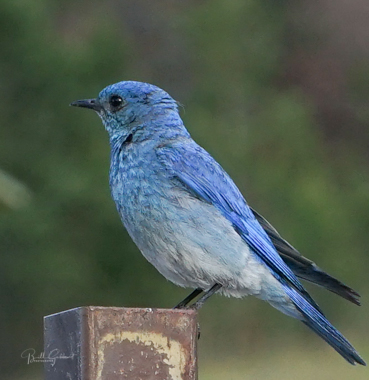By Joshua Rapp Learn
After an abnormally large number of migratory birds turned up dead in people’s backyards in Colorado and other parts of western and central U.S. states, locals began to document their observations on a crowdsourced science platform called iNaturalist. Within the app, a special project was set up specifically for this die-off, which occurred in August and September 2020, so that records of the dead birds could be compiled together.
Around the same period as the birds’ deaths, more than 3 million hectares (7.8 million acres) of land burned, which resulted in habitat loss and the emission of toxic compounds that threaten the health of both avian species and humans. In addition, snowstorms struck parts of the Northwest in early September while these birds were in the midst of their annual migration. Some areas experienced temperature drops of as much as 40°C (72°F) in just a few hours.

Researchers heard of this die-off event and wanted to see whether there was a link between the birds’ deaths and the other major events (wildfires and snowstorms) occurring in the United States at the time. In a new study published in GeoHealth, Yang et al. used the iNaturalist data, which included recordings of a number of migratory species such as warblers, geese, hummingbirds, swallows, flycatchers, and sparrows. The scientists also studied map readings that showed where observations were taken on iNaturalist to compare the locations of the birds’ deaths with the locations of the wildfires and storms.
Their findings were starkly clear. “The wildfire and also the toxic air were the two factors that influenced the birds’ mortality,” said Anni Yang, a postdoctoral fellow in spatial ecology at Colorado State University and one of the study’s authors. There was a strong correlation between the observations of dead birds and wildfires and the toxic gases they produced, but not with the early winter storms.
Yang said other local factors might have played roles in the deaths of some species. The researchers looked at all bird deaths equally, but different species could be affected in different ways by climate events like wildfire smoke or a snowstorm.
Rongting Xu, an ecosystem modeler at Oregon State University and another of the paper’s authors, said that it would be great to run the same study over multiple years, comparing the summer of 2020 with previous summers, for example, to see whether wildfires or early snowstorms in other years caused similar die-offs. Such long-term examinations could also reveal whether factors like climate change are playing a role in bird deaths, she said. (GeoHealth, https://doi.org/10.1029/2021GH000395, 2021)
—Joshua Rapp Learn (@JoshuaLearn1), Science Writer

This article suggests starvation was the cause https://www.aba.org/the-data-behind-mysterious-bird-deaths-in-new-mexico/
To busy to read paper, but at least one part doesn’t make a lot of immediate sense based on simple physics and chemistry: “In parts of California, for example, more bird deaths occurred farther from the wildfires. The reason could be secondary impacts of the fires affecting humidity levels, which could lead to the deaths of birds in hot, humid air over the ocean.”
Toxic gases and water from combustion are diluted as the smoke ages. Downwind from fires the humidity increase is very small. Smoke actually tends to cool the air.
There could be a link, but the proposed mechanism sounds like uninformed speculation….
Good Start and quite possibly a good thesis discussion. However, is there any empirically derived data as to what the actual cause of death was. IE. Heat, gasses, humidity, exhaustion?
Were any birds autopsied so as to determine the exact cause of death rather than a set of equally plausible theories?
” If it can’t be expressed in numbers, it isn’t science.”